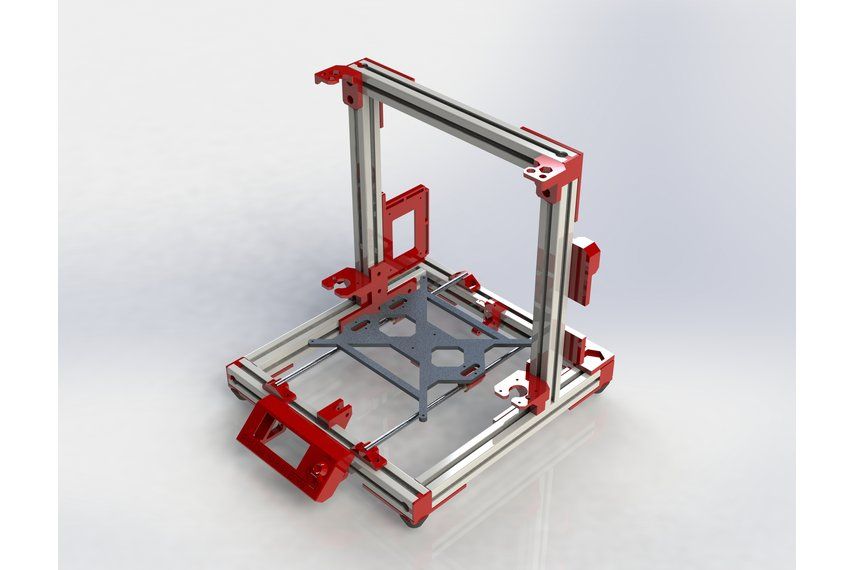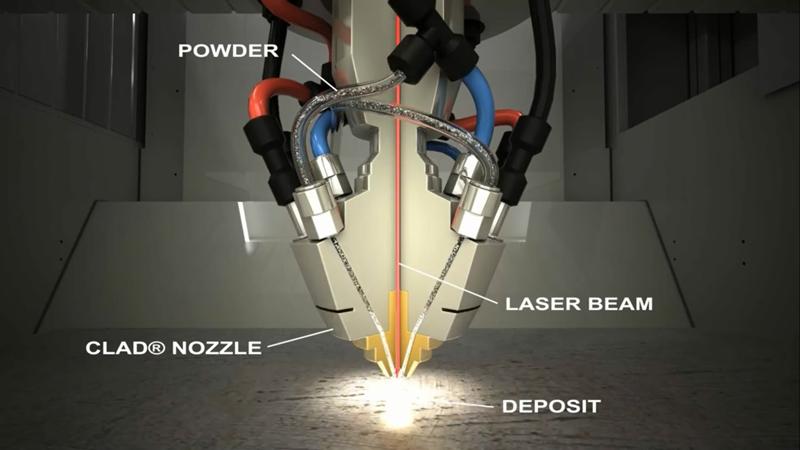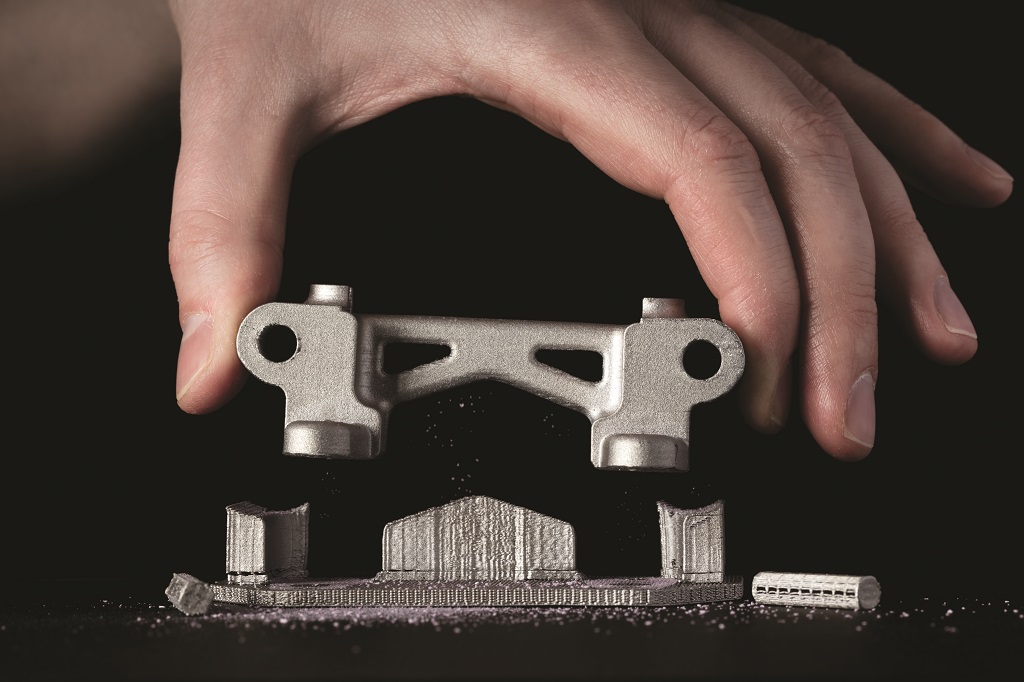Special 3d printer filament
6 Special Filament that You Should Try with Your 3D Printer
If you get used to work with ABS and PLA materials and want to take a step ahead, this is your post! There are plenty of materials in 3D printing world, some are great for decorative projects and others work perfectly in case of industrial applications. Obviously, the right material can take your next project from ordinary to remarkable.
For sure each special filament needs its own settings and in this post you will find all the requirements, tips and tricks to get the best performance.
Here are our favorite special filaments:
GLACE: Glace filament produced by SmartMaterials is a material with glace effect with high transparency. In order to make fully transparent pieces, you should print the object with only one layer, this way the alcohol can penetrate homogeneously in the material.
Left side after alcohol bath
Tips & Tricks:
- If you want to get good mechanical resistance we recommend to use noozles of 0,8mm or bigger.
- Apply treatment with alcohol (ethyl or isopropyl) with a concentration higher than 70°. The higher the alcohol level, the faster the process, although it is also more difficult to control.
- You can directly apply the object into alcohol or use the evaporation method by introducing a paper impregnated with alcohol around the piece in a container.
- Both application may cause soften the piece due to the alcohol absorbation. However, when the alcohol has evaporated completely the piece will return to its normal state.
WOOD: Wood-based filaments are typically a composite that combines a PLA base material with wood dust, cork, and other powdered wood derivatives. Typically, the filament consists of around 30% wood particles, but the exact number may vary depending on the brand. The presence of these particles gives the 3D printed parts the aesthetics of real wood. This material provides a great esthetical look thats why it is great for decorative projects.
Tips & Tricks:
- Due to the high amount of wood particles it is recommended to use nozzles with diameter 0.6 or higher.
- The recommanded printing layer is higher than 0.2 mm.
- It is important to avoid the filament to heat with the extruder in standby as this can produce blocks.
- Many wood-based filaments can be easily post-processed using standard wood sand paper. This can further smooth and refine the surface finish of your prints.
STEELFILL: Steelfill is similar to Wood filament, which contains steel derivatives instead of Wood. For your first test prints with SteelFill we recommend using layer heights of 0.2mm up to 0.27mm when using 0.4mm nozzles. Generally this will create a good amount of flow with most standard speed settings which will prevent heat from the hotend migrating through the filament into the cold end of the extruder. As with these other filaments, the key is post-processing.
Tips & Tricks:
- This material performs well on both heated and non-heated build platforms. For those users printing on a cold build platform we advise applying masking tape to the build area.
- Take your time leveling the bed and adjusting the the gap between 3d printer nozzle and build plate. A perfect first layer will is very important, especially for 3d prints with a large bottom layer.
- This material has very minimal warping tendencies, however if it’s very important that your part is perfectly flat than we suggest to turn down the fan that is cooling your part.
FLEXIBLE: SmartMaterials Flex Filament is one of the best flexible filament in the market. This material is perfect to print pieces that require flexibility and elasticity.
Tips & Tricks:
- FLEX do not work as well as PLA or ABS with high printing speeds, that’s why it is recommended slowing down the printing speed.
 The material works well at a value of 35 mm / s. It is advisable to print your complete piece with the same speed. In this way the irregularity in the printed piece can be avoided.
The material works well at a value of 35 mm / s. It is advisable to print your complete piece with the same speed. In this way the irregularity in the printed piece can be avoided. - The optimum printing temperature recommended by the manufacturers is 215ºC. Using higher values can cause a jam or defects in the material.
- Once you have controlled the temperature and speed set a layer height of 0.2 mm
- If possible, deactivate retractions in order to avoid obstructions in the extruder.
NYLSTRONG: Filament NYLSTRONG is reinforced Nylon (PA6) which has great mechanical, thermal and abrasion resistance. It is really hard so it is perfect for industrial applications. It is also Ideal for pieces that work at really high temperatures.
Tips & Tricks:
- At the end of the printing of the piece, if it takes off very quickly from the base, contractions may occur at the base of the piece due to the abrupt change in temperature.
 Lower the temperature of the warm bed 5ºC and be at that temperature for 5 minutes. After this period, carry out the same operation again until the temperature of the base is approximately 50 ° C, so that the final piece can be detached without deformation.
Lower the temperature of the warm bed 5ºC and be at that temperature for 5 minutes. After this period, carry out the same operation again until the temperature of the base is approximately 50 ° C, so that the final piece can be detached without deformation. - It should not be printed with a layer height of less than 0.1mm since, due to material loads, it is possible for the extruder to seal if it is very small in diameter.
INNOVATE TPU HARDNESS+: Innovate TPU Hardness + Filament is a thermoplastic polyurethane that combines hardness, elasticity and mechanical strength, that´s why it is the perfect material to create highly rigid parts with elasticity. It has high resistance against abrasion, fats, oils, oxygen, ozone, microorganisms, hydrolysis and stabilized in UV light. It is one of the best improved material for the applications in aerospace, industrial, medical and automative sectors.
Innovatefil TPU HARDNESS+ is delivered in a vacuum bag with a great barrier against moisture so that the filament cannot absorb humidity.
Tips & Tricks:
- Once the product is unpacked it is recommended to keep it in a dry and dark environment. If not maintained in a suitable environment the material can absorb up to 0.5% atmospheric moisture, this can create water vapour in the extrusion that can end up in a bad surface finish.
- Once printing is finished it is recommendable to clean the nozzle eliminating the excess of material to avoid seals and defects unwanted, if several materials are used it is advisable to have a nozzle for each material to avoid being mixed.
3D Printer Filament | MatterHackers
- Home
- Store
- 3D Printer Filament
At MatterHackers, we take pride in offering the largest selection of 3D printing filament available. From our affordable MH Build Series filament, to our professional-grade PRO Series filament, you can find any material, like PLA, ABS, NylonX, PETG, TPU, TPE, Flexibles, Polycarbonate, and more! Along with our industry-proven brand of filament, we also carry other top-notch materials from ColorFabb, Taulman3D, NinjaTek, Ultimaker, 3DFuel, and more.
3D Printer Filament Collections
All 3D Printer Filament
Getting Started
3D Printer Filament Comparison Guide
3D Printer Filament
PLA Filament
The most common filament, PLA is a great go-to material for its ease of use.
Metal 3D Printing Filament
Print with real metal on your desktop 3D printer.
ABS Filament
ABS is a durable material perfect for projects that need strength.
PETG Filament
PETG is a strong, reliable material that is great for end-use parts.
Nylon Filament
Nylon and Nylon Composites for strong, functional 3D printed parts.
Quantum Dual-Color PLA
Mind-bending, dichromatic PLA that works on every printer
Support Filament
Dissolvable and breakaway support materials for dual extrusion 3D printing.
MH Build Series Filament
MH Build Series filament is designed and priced for every maker
MH Build Series PLA
An affordable, low-cost PLA filament intended for producing quality, 3D printed parts.
MH Build Series ABS
An affordable 3D printing filament meant for every maker with projects that require durable and temperature resistant parts.
MH Build Series PETG
An affordable, low-cost PETG filament intended for producing tough and sturdy 3D printed parts.
MH PVA Support Filament
MH PVA Support Filament is a dissolvable support material for dual extrusion parts.
PRO Series Filament
When reliability and consistency counts, be a PRO.
PRO Series PLA
PRO Series PLA is intended for producing professional, high quality, 3D printed parts.
PRO Series ABS
A formulation intended to help your prints stand out with a beautiful, glossy, opaque finish.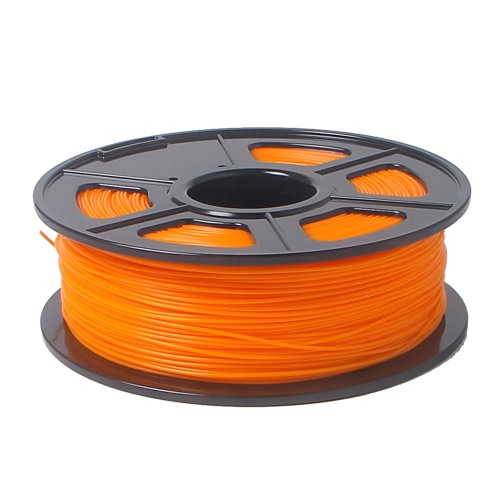
PRO Series PETG
Temperature resistance and fantastic visual performance with translucent colors
PRO Series Tough PLA
Strong like ABS and much easier to use - it's the best material for reliably printing functional prototypes.
PRO Series Flex
All the benefits of flexible filament together with improved strength over other flexible filaments
PRO Series Nylon
The strength and durability of Nylon now in vibrant colors.
PRO Series Ryno
Excellent at bridging and retraction to keep your parts clean with minimal post-processing.
NylonX
The durability of Nylon combined with the stiffness of carbon fiber
NylonG
Glass infused nylon for strong, functional prints
Carbon Fiber Reinforced PLA
Carbon Fiber reinforced PLA adds more strength and rigidity compared to regular PLA.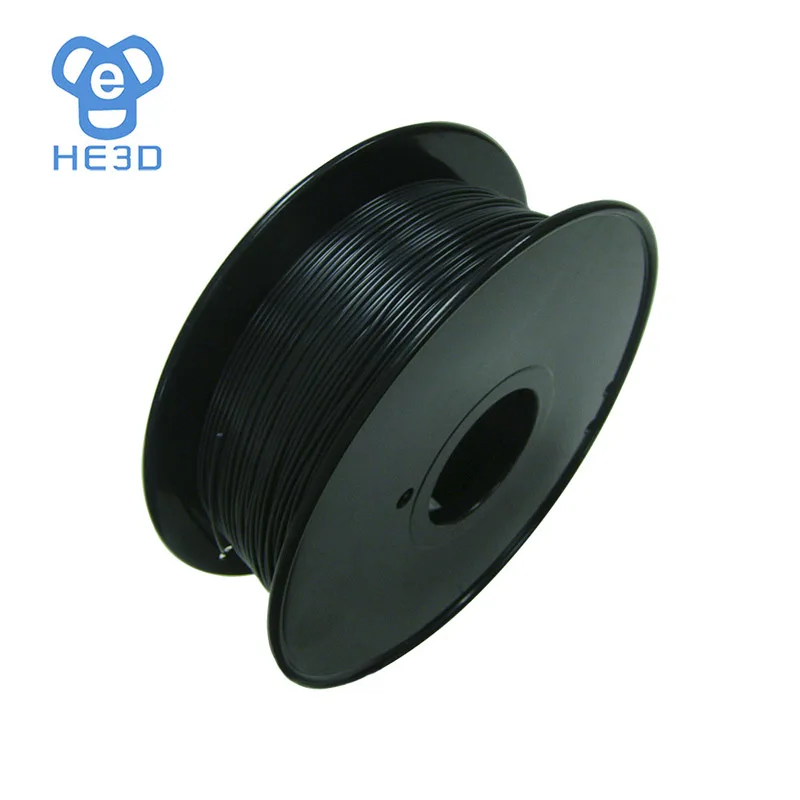
ColorFabb
With several varieties available, ColorFabb filament is consistent and reliable.
ColorFabb Fill Series
PLA filaments infused with wood, metal and glow-in-the-dark particles for eye-popping prints.
ColorFabb PLA/PHA Series
A unique 3D printing filament tougher and less brittle than just PLA.
MadeSolid
Affordable materials from MadeSolid - limited time only.
NinjaTek
High quality and industry-leading flexible materials.
PVA (Polyvinyl Alcohol)
Polyvinyl Alcohol, a water-soluble support material that dissolves away in a water bath to leave only your perfectly printed part.
Polymaker Filament
Browse all filament collections from Polymaker!
Polypropylene Filament
Polypropylene (PP) is a semi-crystalline thermoplastic filament used to produce durable and lightweight prototypes through Fused Filament Fabrication (FFF).
Proto-Pasta PLA Blends
PLA filaments blended with metal, wood and glow-in-the-dark materials for cool print effects.
Soft PLA
Soft PLA is a flexible material great for parts that need to bend to fit their environment.
PRO Series TPU
Strong yet bendable filament that has excellent layer to layer bonding.
Taulman 3D
High-strength nylons and engineering-grade materials for functional 3D printing.
Ultimaker ABS Filament
Get beautiful, glossy prints with Ultimaker ABS filament
Ultimaker CPE Filament
Get high impact strength and chemical resistance with Ultimaker CPE
Ultimaker Materials
High-grade filament for any 3D printer from Ultimaker
Ultimaker Nylon Filament
Get impact and abrasion resistance with Ultimaker Nylon filament
Ultimaker PLA Filament
Highly versatile, easy to print and available in a variety of colors.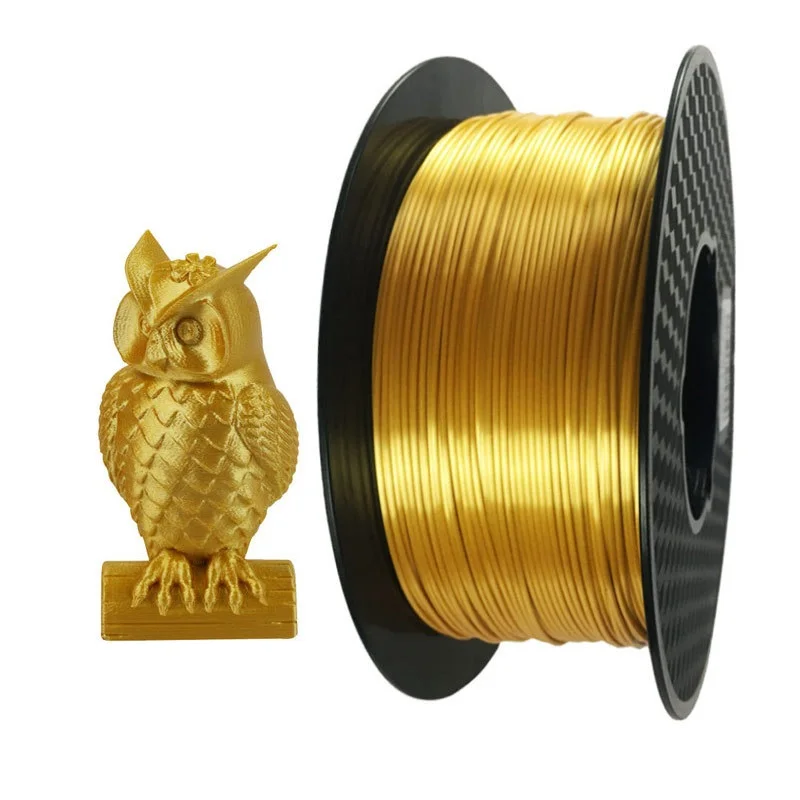
Ultimaker Polycarbonate Filament
3D Print molds, tools, and functional Prototypes with Ultimaker PC
Ultimaker TPU Filament
Get qualities of rubber and plastic and resistance with Ultimaker TPU
Fillamentum
From ASA to exotic colors, Fillamentum provides a quality 3D printing experience.
3DXTech Filament
Explore advanced manufacturing filament from PEEK to ESD-safe materials.
Proto-Pasta
Metallic filament and unique composites make Proto-Pasta 3D filament stand out.
SpoolWorks
3D printing materials from the creators of the industry-leading All-metal v6 HotEnd.
PRO Series Breakaway Support Material
Provides fast, easy, and clean mechanical breakaway for 3D printed parts.
AprintaPro Filament
3D printing filament with great layer adhesion that produces excellent parts.
Kodak 3D Printing Filament
A wide range of 3D printing materials with a focus on color and quality.
eSUN
Consistent and reliable 3D printing filament for entry-level 3D printing.
BASF Ultrafuse 316L Metal 3D Printing Filament
Reliable metal manufacturing for industrial applications - right from your desktop 3D printer.
FiberForce Pantone (R) Certified PLA
Browse a selection of Pantone® certified colors.
Ultimaker Tough PLA Filament
The ease of PLA printing with the impact resistance and stiffness of ABS.
Kai Parthy Lay Series
Browse unique and experimental 3D printing materials.
DSM 3D Printing Filament
Engineering-grade, advanced 3D printing materials for industrial production.
Engineering Grade Filament
High-temperature and advanced materials used in several industrial applications.
MakerBot 3D Printing Filament
Rigorously tested for quality, and optimized for Method Printers.
Fillamentum ExtraFill Series
An excellent baseline PLA that prints amazingly well.
Fillamentum Extrafill ABS Filament
Premium ABS Filament with a wide variety of vibrant colors.
Fillamentum Crystal Clear Series
An incredible line of semi-transparent, colored materials.
Fillamentum FlexFill Series
Flexfill is rubbery and elastic, making it impact, oil and abrasion-resistant.
Fillamentum Vertigo Series
Vertigo PLA series reflect light and create awesome, eye-catching prints with flecks of gold, silver and blue.
Fillamentum PVC Vinyl Filament
Fillamentum PVC Vinyl Filament
Fillamentum ASA Series
A rugged weather-resistant material that is much more resistant to UV light.
Fillamentum TimberFill Series
Made from a PLA base with wood particulate, Timberfill gives you 3D prints that look like they were carved from wood.
Fillamentum CPE
Fillamentum CPE
Dow OBC 3D Printer Filament
Strength and Flexibility in One Easy-to-Print Material
Raise3D Filaments
Browse Raise 3D selection of 3D printing filaments
Kodak Nylon 3D Printing Filament
Kodak Nylon 3D Printing Filament
Kodak PLA+ 3D Printer Filament
Kodak PLA+ 3D Printer Filament
Kodak Flex 98 3D Printing Filament
Kodak Flex 98 3D Printing Filament
Kodak PLA Tough 3D Printer Filament
Kodak PLA Tough 3D Printer Filament
Kodak PETG 3D Printer Filament
Kodak PETG 3D Printer Filament
Kodak ABS 3D Printing Filament
Kodak ABS 3D Printing Filament
BASF Ultrafuse 3D Printer Filament
Industrial grade filament for technical and engineering level 3D printing.
BASF Advanced Specialty Materials
Sophisticated, advanced materials created by the world's leading chemical company.
Clearance Items - Materials
Filament and resins at reduced prices for great savings.
Metallic 3D Printing Filament
Browse real stainless steel metal filament and metal composites
Guides & Articles
How To Succeed When 3D Printing With PLA Filament
Discover the best practices for 3D printing with PLA filament - from finding the right temperature, to which surfaces to 3D print on, this step-by-step guide will help you succeed with 3D printing PLA.
How To Succeed When Printing With ABS
ABS filament is a versatile material that's a great option for when you need your 3D-printed parts to be strong and heat-resistant. Learn how to print this material like a Pro in this in-depth guide.
How to Succeed when 3D Printing with PETG Filament
This in-depth guide provides everything you need to succeed when printing with PETG filament. Embrace the fantastic properties of durable and easy to print, PETG filament!
How to Succeed with 3D Printing Metal on a Desktop 3D Printer
The time is here to explore easy and affordable metal 3D printing. 3D printing with real metal on a desktop 3D printer is now possible using Ultrafuse Metal 3D printing filament from BASF Forward AM.
How To Succeed When 3D Printing With Nylon
Learn how to 3D print Nylon like a pro. Nylon is a stronger and more durable alternative to PLA or ABS and easy to 3D print with using these Tips and Tricks.
How To Succeed When Printing With Flexible Filament
Let’s take a look at what makes flexible filaments easier to print and how you can add flexible filament to your 3D printing material toolbox.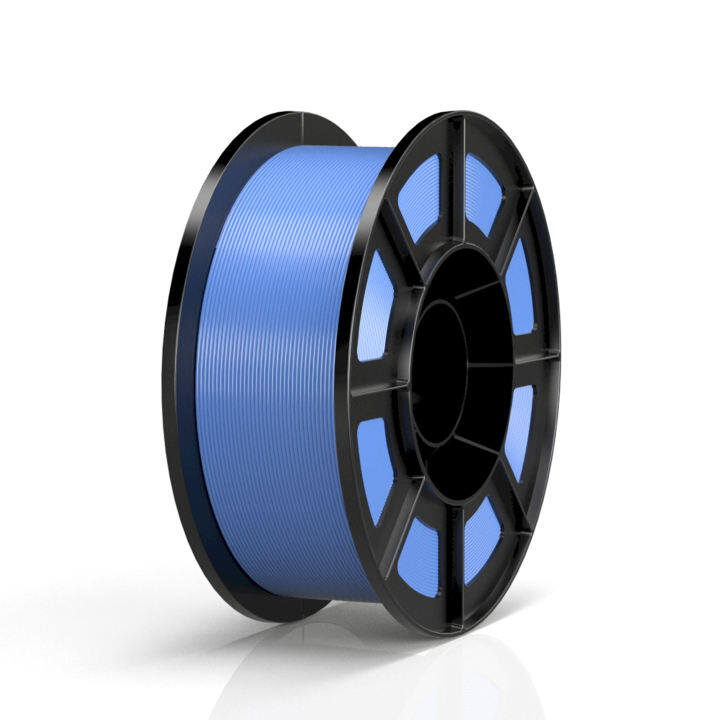
How to Succeed with NylonX
NylonX has quickly become one of our favorite filaments for strong, durable, and ready-to-use parts. Here's an in-depth look at Nylon X, and some printing tips to get the most out of this great new material.
How to Succeed When 3D Printing with MH Build Resin
Make SLA resin 3D printing easier with this helpful detailed article on how to successfully fine-tune photopolymer resin to your 3D printer.
How To Succeed: 3D Printing with Nylon and Nylon Composites
Nylon and nylon composites perform exceptionally well in a variety of uses, it just takes a gentler touch to print it successfully.
How To Succeed When 3D Printing With ASA Filament
Follow this step-by-step guide to learn how to print with ASA, the perfect material for any outdoor projects.
What is 3D printing filament?
3D printing filament is a thermoplastic, or polymer, that melts when heated and is extruded through a nozzle layer by layer to create a three-dimensional object. After the filament is extruded, it cools and becomes the surface the next layer is deposited on top of.
After the filament is extruded, it cools and becomes the surface the next layer is deposited on top of.
3D printing filament is sold in spools ranging in weight from 0.5 kg to 10 kg. It comes in two diameters; 1.75mm and 2.85mm.
The most commonly used filaments are PLA and ABS. Both have advantages for different applications.
What types of filament are there?
Below is a chart showing the more common types of filament, along with their transition temperatures, bed temperatures, and ideal printing surfaces.
| Filament | Common Transition Temps | Common Bed Temps | Printing Surface |
| PLA | 205±15 °C | 40±15 °C | Glass |
| ABS | 230±10 °C | 90±10 °C | Glass with ABS slurry or kapton tape |
| PETG | 245±10 °C | 60±10 °C | Blue painters tape or bed adhesive |
| Nylon | 255±15 °C | 70±10 °C | Garolite |
| ASA | 250±10 °C | 90±10 °C | Hairspray, bed adhesive |
| Polypropylene | 250±15 °C | 110±10 °C | Packing tape or polypropylene |
| TPU/TPE | 230±10 °C | 50±15 °C | Glass, painters tape |
| PCTPE | 235±10 °C | 70±10 °C | Glass with kapton tape or hairspray |
| Polycarbonate | 290±20 °C | 130±15 °C | Gluestick/hairspray |
| PVA Support | 180±20 °C | 45±10 °C | LayerLock PEI |
| Breakaway Support | 210±10 °C | 50±5 °C | LayerLock PEI |
| HIPS Support | 230±10 °C | 50±10 °C | Glass with kapton tape or hairspray |
Plastic filament for 3D printers ESUN HIPS 3D delivery in Russia
ESUN HIPS — plastic filament for 3D printers 1.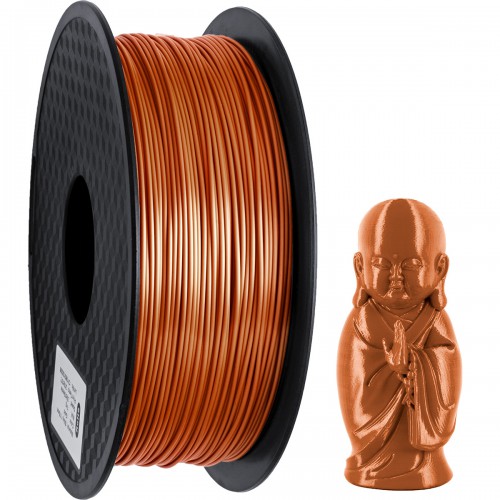 75 mm
75 mm
2 150₽ Select options
2 150₽
ESUN HIPS is an impact resistant plastic filament for 3D printing.
- Izod impact strength - 11 J/m 2
- Material density - 1.05 g/cm³
- Delivery: 2-5 days
- Diameter 1.75; colors: white, blue, yellow, green, brown, red, natural, orange, pink, green, grey, blue, purple and black
- Smell: yes
- Manufacturer: eSUN, China
- Net weight: 1 kg.
ESUN HIPS is a high impact plastic 3D printing filament and/or support. The applied printing technology is FDM.
- Description
- Details
- Specifications
- Payment
- Guarantees nine0016
- Delivery
- Reviews 0
3D Printer Filament ESUN HIPS
ESUN HIPS (High Impact Polystyrene) is a high impact polystyrene. Of course, this is a unique material. On the one hand, it can be used as a strong base material for building a product. On the other hand, as a soluble support material (soluble in D-limonene). The material belongs to the group of engineering plastics. nine0003
Of course, this is a unique material. On the one hand, it can be used as a strong base material for building a product. On the other hand, as a soluble support material (soluble in D-limonene). The material belongs to the group of engineering plastics. nine0003
ESUN HIPS filament properties:
• High bending strength and impact resistance;
• Good for mechanical post-processing;
• Low moisture absorption;
• Soluble with D-limonene;
• Long lasting properties after printing - products are durable.
Delivery options:
• HIPS thread 1.75 mm thick in 1 kg spools;
Benefits of ESUN HIPS 3D Printer Plastic Filament:
- Limonene dissolves; nine0016
- Low moisture absorption;
- High rigidity.
⚠ Attention! As a rule, HIPS material requires the use of special means during printing, to ensure the extraction and protection of the respiratory tract.
ESUN HIPS filament printing specifications:
- Temp.
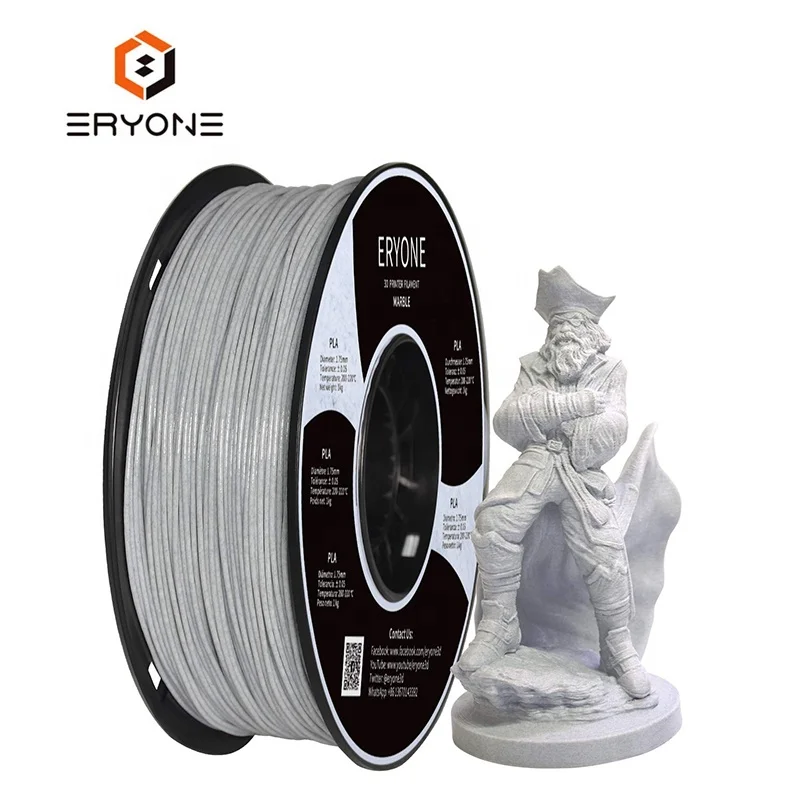 printing: 220 - 260℃;
printing: 220 - 260℃; - Temp. substrate: 110℃;
- Print speed: 30 - 80mm/s.
⚠ Attention! HIPS requires the platform to be heated to 100°C and has reduced adhesion to the platform. Use adhesion promoters. Stable printing on a printer without heating the platform to the specified temperature is not guaranteed! nine0057
Features
| Density | 1.05 g/cm³3 |
| Izod impact strength | 11 J/m2 |
| Thermal deformation temperature | 80 °C, 0.45 MPa |
| Tensile strength | 27 MPa |
| Elongation at break | 55% |
| Flexural strength | 39 MPa |
| Flexural modulus, MPa | 2280 |
| Melt flow index | 3g/10min(200°C/5kg) |
| Print speed: | 30 - 80mm/s |
| Purpose | engineering, hobby |
| Diameter | 1.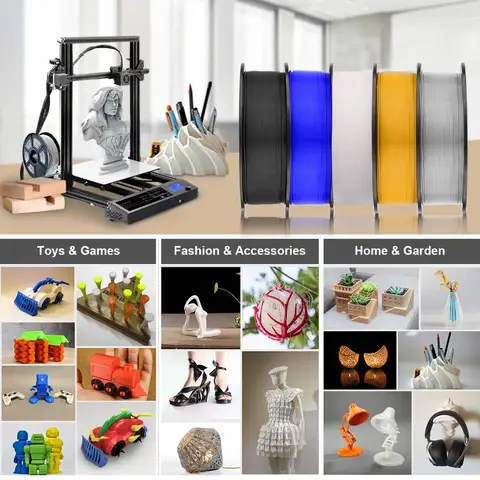 75 and 2.85 mm 75 and 2.85 mm |
| Form | Hard plastic thread |
| Odor | Must be controlled 9009nine |
| Net weight | 1 kg. or 2.5 kg |
Payment
| The Multismol online store provides cash and non-cash payment. Cash payment is possible only upon delivery of the order by an employee of a courier company in Moscow, Moscow region, St. Petersburg and the region. In all other cases, we accept non-cash payments through the secure Internet acquiring of PJSC Sberbank. We accept cards of payment systems VISA, Mastercard, MIR, JSB. You can also use SberPay to pay. nine0003 If you want to purchase goods for business, let us know about it and we will issue you an invoice for payment from the current account of a legal entity or individual entrepreneur. You can get more detailed information about payment in the section - Payment. |
Guarantees
| The Multismol shop carries out its activities within the framework of the legislation of the Russian Federation. We guarantee that all goods are purchased legally from manufacturers, we do not distribute illegal goods or fakes. nine0003 We guarantee a refund if the product is out of stock or not delivered. And also, in case of delivery of low-quality goods. We use the official Internet acquiring of Sberbank PJSC for payment, which guarantees secure payment. |
Delivery
| We deliver orders in Moscow and the region, in St. Petersburg, in Russia, in countries near and far abroad. The general conditions for the delivery of orders, as well as specific information on each delivery method, are set out in the Delivery section of the Multismol online store. nine0003 |
What is 3D printer filament and how to choose it?
December 3, 2021
To print objects on a 3D printer, he needs the appropriate material. 3D printers typically use special plastics that have different properties depending on their composition. These plastics are called filaments. And because of their shape, in the form of a thin thread, everyone is used to calling them that way. And you yourself choose which filament for a 3D printer to buy in order to get the desired result. nine0003
3D printers typically use special plastics that have different properties depending on their composition. These plastics are called filaments. And because of their shape, in the form of a thin thread, everyone is used to calling them that way. And you yourself choose which filament for a 3D printer to buy in order to get the desired result. nine0003
It is important to understand that during the printing process, the filament is heated, melted and extruded through the 3D printer's extruder nozzle. There are many 3D printing filaments used in printing today, from standard plastic filaments to metallic imitations or wood or flexible filaments.
It's important to choose the right filament for your 3D printer. Using filament with the wrong diameter or settings will inevitably result in printing failure or damage to the printer. This can be avoided if you understand which filament is best for your printer and your part. All 3D printers have a unique set of temperatures, speeds, and features that you must also consider in order to buy the right filament. nine0003
Each filament has its own set of characteristics both in terms of appearance and physical properties. Each offers its own set of features that you need to know to optimize your printing. You also need to consider what properties are needed for the object you are printing. Will the material be used indoors or outdoors? Should the part move and flex, or should it be absolutely rigid? What forces will be applied to the object? What post-processing methods will be applied to the finished 3D print? It depends on what thread you need to buy. nine0003
Of the many threads available, some are more popular than others. These are such filaments as ABS, PLA and PET/PETG.
ABS is popular because it is strong and impact resistant. It's this strength and moderate flexibility that makes it a great choice for 3D printing. In addition, it is easy to extrude from the nozzles of the printer, so it is easy to work with and can be bought anywhere.
PLA (polylactic acid) is a special type of thermoplastic made from organic materials such as corn starch and sugar cane.






